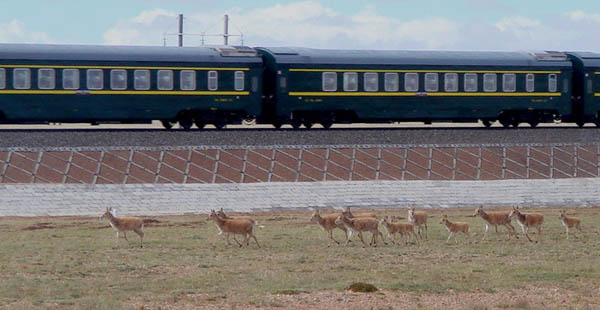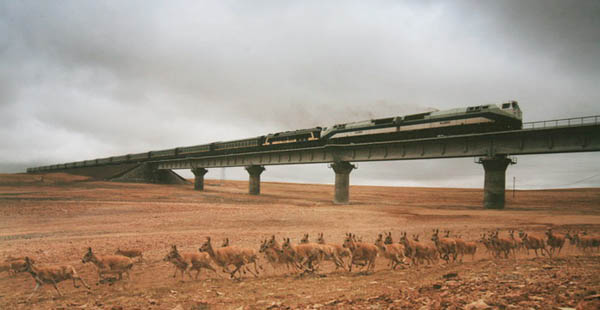The State Environmental Acceptance Check for Qinghai-Tibet Railway (QTR), which mainly focused on environmental protection (including water resources protection), frozen soil, sanitation, and especially the ecosystem conservation, had been conducted from May 30th to June 1st. The Committee of the State Acceptance Check, which was organized by State Environmental Protection Administration (SEPA) and the Chinese Ministry of Railways, consisted of 29 Chinese experts from the fields of ecology, zoology, botany, environment, frozen soil, and so on. It was the first comprehensive examination and evaluation regarding the implementation of environmental appraisal and stipulations in the course of the QTR construction. Professor Yang Qisen from the Institute of Zoology (IOZ), Chinese Academy of Sciences (CAS), was one of the committee members and participated in the supervision of the acceptance examination.
Before this acceptance check, a field survey and exploration has been carried out since last May to examine whether or not the QTR construction comply with the environmental protection requirements. This field survey was undertaken by the Appraisal Center for Environment and Engineering of SEPA, the Chinese Academy of Railway Sciences, the Research Center for Eco-Environment Sciences of CAS, and IOZ. An investigation report was submitted after the field survey. Based on this report and the field inspection, the Committee of State Acceptance Check has announced that the Qinghai-Tibet Railway has passed the State Environmental Protection Acceptance Check. This announcement was released from the acceptance check conference held on June 1st.
The Research Group of Mammalogy of IOZ, CAS has taken charge of projects regarding the inspection of wildlife status along the Qinghai-Tibet railway since 2001. These projects, which are entrusted by the Ministry of Railways, include the evaluation of environmental influence on wild animals, the design of wild animal passages and monitoring of wild animals inhabiting along the railway in the course of the construction. From 2004 to 2007, one of the main jobs of the research team was to conduct overall and continuous inspections on Tibetan antelope traversing the railway and channels built for wildlife migration. Based on the field investigation and the oversee experience of wild animal passage construction, the research team presented suggestions regarding the building of animal passages for Qinghai-Tibet railway. The suggestions have been proved to be important to the wildlife conservation along the railway. Wild animals along the Qinghai-Tibet railway have gradually adapted to migrate through the animal passages till now.
The monitoring programs on the wildlife inhabiting along the QTR have been still conducted by the IOZ.


|


